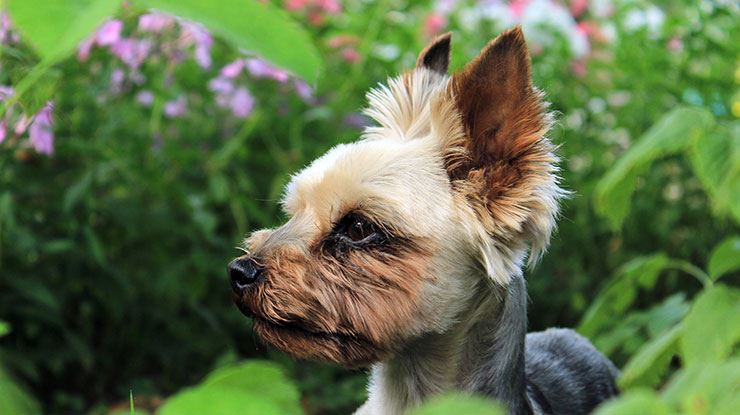
7 Important Tips on Creating a Dog-Friendly Garden
One shouldn't underestimate the damage a dog can cause to their beautiful garden. Nor should one ignore the potential dangers a seemingly harmless garden can have on a dog's health. Here are seven great tips for dog owners who want to create a safe and fun garden for their furry pals.
1. Avoid Plants that May Poison Your Dog
According to the poisonous plant list from the ASPCA, there are many houseplants and flowers that are toxic to dogs. For example, flowers like chrysanthemums can be toxic to dogs because they contain natural chemicals like pyrethrin, which can lead to symptoms like vomiting and hyper-salivation.
Go through your gardening plans and make sure you cross off any plants that fall under the toxic list. You may want to also check in with your neighbors and propose the importance of growing pet-safe plants in their backyards.
2. Prevent Outdoor Flea and Tick Infestations
Gardens provide a perfect hiding place for fleas and ticks. Thankfully, there are certain measures you can take to prevent your garden from becoming a hotspot for these pests.
First, fleas and ticks like to hide in long grass or shrubby areas because they cannot tolerate the sun for long periods of time. Mow the lawn regularly and keep it as short as possible. This way, there is a lesser likelihood for fleas and ticks to latch on to your dogs as they roll around the garden bed.
Second, fleas thrive in humid conditions. Flea larvae need a decent amount of moisture or they will quickly dry out and die. Adjust the irrigation system in the garden so that you aren't overwatering the garden soil. Smart watering systems should be a strong consideration for people who live in areas that get a lot of rain.
Last but not least, instead of using something toxic like chemical pesticides, consider using natural pest remedies like beneficial nematodes to reduce the garden pest population. You may want to also introduce pet-safe plants, such as thyme, that have pest-repelling properties.
3. Grow Bigger Plants
If you are starting a new garden then consider growing plants that are bigger than your dogs. Larger plants, such as asparagus ferns and dwarf palms, are more likely to discourage your furry pal from accidentally trampling them.
In addition to growing larger plants, try and pack the plants in more tightly (not too tight, otherwise there will be a lot of competition between plants for nutrient and water). Your dogs are more likely to stay out if the landscaped area is packed more densely.
4. Build a Doggy Patrol Path
Dogs, even domesticated ones, have territorial instincts and may have a strong urge to patrol the home to protect their family from threats and trespassers. You can help your dog fulfill this instinct by building some form of trail along the perimeter of the garden and backyard.
You can create these paths by using materials like cement, bricks, wooden boards, or sand. Ideally, you should build paths that have a curvy design. Otherwise, your dog might just cut corners and avoid the path altogether. These patrol paths are also a great way to keep your dog away from the garden bed.
If your dog isn't allergic to cedar mulch/chips then you might want to incorporate some of it along the patrol path. Cedar has pest-repelling properties due to its strong scent. It can provide another layer of protection against fleas, ticks, and other pests that may irritate your dogs.
5. Build a Dig-Free Zone
Digging is another common instinct of dogs. You might not like it, but dogs dig for good reasons. They may be doing so to release stress, alleviate boredom, or create a hole to hide their prized possessions in. Rather than trying to stop them from digging altogether, a better approach would be to find an isolated spot in the garden where your dogs have the freedom to dig all year-round.
There are two common ways of building a dig-free zone. You can either go for a temporary solution by filling an above-ground container (e.g., plastic wading pool) with sand or soil, or you could go for a permanent digging pit by creating a raised sand bed in an isolated area of the garden. You can encourage your dog to use the digging pit by placing some toys and snacks on the play sand.
6. Build an Outdoor Dog Potty Area
This is an important step for people who want to maintain healthy, green grass in their garden. Training your dog to use a designated potty area will stop him from peeing on the grass, which in turn prevents the formation of yellow grass spots. Dog urine kills grass due to an overload of nitrogen.
Like the dig-free zone, you should find an isolated area of the garden where your dogs can do their business. One DIY suggestion is to build an appropriately sized frame using wooden boards, then fill it with pebbles and gravel (for efficient draining purposes).
7. Use a Magnetic Screen Door
A magnetic screen door is a must-have if you want to allow your dogs to enter and leave the garden without your intervention. These screen doors can be easily installed along the frame of the patio door.
The screen doors provide many benefits. First, they are pet-friendly and allow your dogs to proceed with little effort. Second, the magnetic seals prevent bugs from entering your home.
With a bit of effort, you can turn your garden into a mini oasis for both yourself and your dogs. Incorporate the above tips to allow your dogs to enjoy the gardening space without causing too much destruction on your valuable garden plants.
Sally Cameron is an avid gardening enthusiast and a strong promoter of using natural remedies. You can learn more by visiting Organic Lesson, a blog where Sally shares her latest tips and knowledge.










